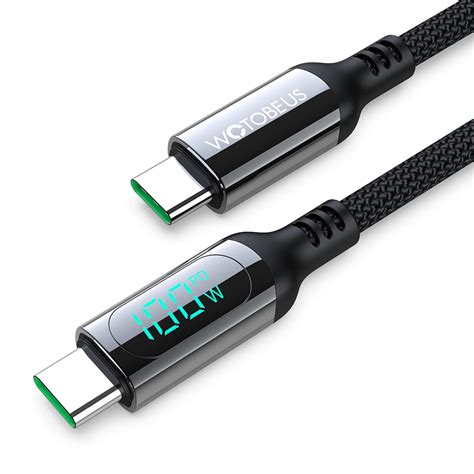The latest feature in USB-C cables—built-in displays—is raising eyebrows and sparking numerous debates among tech enthusiasts. These cables promise to show real-time power consumption data, a notion that seems both cutting-edge and practical at first glance. But, like many innovative ideas, it’s essential to delve deeper into what this means for everyday users.
These USB-C cables with embedded displays are designed to offer a visual insight into power consumption. Ideal for gadget aficionados who want to ensure their devices are charging correctly, or just those who are curious about how much juice their devices are consuming. This can be particularly useful for finding out if your phone is truly fast-charging, or if your USB ports are providing adequate power. However, such transparency isn’t without its criticisms.
One primary concern is the potential for these cables to double as spying tools. Some users question how we can be sure these cables aren’t doing something else besides displaying power statistics. Given the ongoing discussions about cybersecurity, it’s a valid question. The USB-IF, an organization responsible for maintaining USB standards, publishes a list of approved manufacturers. This can serve as a basic policy control for consumers, but it’s by no means foolproof—there’s always a risk of malicious entities slipping through the cracks.
Security isn’t the only concern. There’s also the issue of reliability. Multiple comments from users reveal that these cables, while innovative, have a troubling track record for durability. Instances of these cables breaking down, emitting smoke, or even damaging devices are not rare. This raises the question of whether the added benefit of a display justifies the risk to otherwise expensive and critical hardware.
In addition to potentially becoming an entry point for malicious activities, these cables could also contribute to electronic waste. As technology continues to advance, it becomes tempting to replace older, ‘boring’ cables with new, flashy ones. Given that USB-C is already a universal standard expected to last for years, overhauling your current cable set for one equipped with a screen might be excessive and environmentally unsound.
Despite the skepticism, some users find value in these cables. They provide immediate visual verification if, say, a phone or laptop is charging efficiently. However, it’s essential to note that sophisticated USB power meters are available, which can offer far more precise readings without the risk of damaging your devices. These meters can show volts, amps, and even have extensible logging and scripting capabilities.
In technical communities, there’s a consensus that a minimalist approach can often be more secure. For instance, using a basic USB condom that strips down data lines to allow only power to flow through is a method suggested by some for enhanced security. The idea is that such simplistic and transparent devices are less likely to be compromised, unlike a seemingly advanced cable with hidden internal chips capable of other functions.
Finally, there’s the social aspect—user behavior. The consumer habit is generally to sort by price and opt for the cheapest available option, often from less-known brands. However, when it comes to technology that touches critical aspects of our daily lives, a bit of due diligence goes a long way. Devices from reputable manufacturers might come at a premium but investing in trusted brands could save you from future headaches and potentially costly repairs.


Leave a Reply